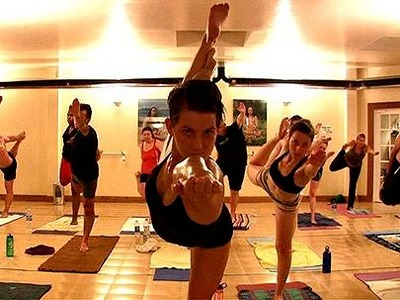Hot yoga is yoga practiced in a hotter-than-normal room, and the style of yoga performed can vary from studio to studio, says Samantha Scupp, the founder and a teacher at Heatwise, a New York City–based hot yoga studio, who is certified by Yoga Alliance.
Here are a few things to know before you try it.
How Hot Is a Hot Yoga Class?
In hot yoga, the room is heated to temperatures that can range from the high 80s to 105 degrees F, on average.
Not only can the temperature fluctuate depending on the studio (check the class description or call the individual studio to find out details), but the method of heating can be different as well, says Scupp.
Along with conventional heating, some studios use a humidifier to make the room feel warmer. Some studios, like Heatwise, use infrared heat that comes from electric heat panels that are placed on the ceiling or around the room, which can feel more natural than forced-air heat, she says. The size of the room, the weather outside, and how packed the class is can all be factors in how hot the room gets, Scupp says.
Not All Hot Yoga Classes Are the Same
Yoga done in a hot environment is called “hot yoga.” Hot yoga became popular in the 1970s with a specific style called Bikram yoga, and heat is now used to enhance a variety of yoga styles.
Vinyasa yoga or flow-type yoga practiced in a heated studio can also be called hot yoga. It would be a good idea to have some yoga experience before you step into a hot yoga class, says Scupp. Depending on the studio, there may be a beginner level course offered.
Pregnant Women, People With Heart Conditions, and Some Others Should Check With Their MD Before Doing Hot Yoga
In general, hot yoga is safe for someone as long as they’re in good health, says Laskowski. If a person has certain preexisting chronic health conditions, previous heat injury, certain heart conditions, easily gets dehydrated, or is pregnant, it may not be safe to do hot yoga, he says.
“It’s always a good idea to check with your doctor if you’re going to try an activity that could stress your body,” says Laskowski.
What Are Other Popular Styles of Yoga?
There are about 20 major types of yoga, and certain kinds can appeal to certain individuals, says Laskowski. That’s because people often have different goals and reasons for wanting to do yoga, he says.
Depending on where you live and the size of the yoga community, you may find several types of yoga offered at studios near you. Here are a few of those types.
Hatha Yoga
Hatha yoga (pronounced HAH-ta, not -tha) encompasses several types of yoga, including ashtanga, vinyasa, and power yoga. Hatha classes tend to be slower-paced than vinyasa classes, and may not necessarily flow from pose to pose, says Fleming. Poses are typically held for several breaths before another pose begins. What is consistent across different types of hatha yoga is that the physical poses and postures are meant to be linked to your breathing patterns.
Ashtanga Yoga
Ashtanga yoga is a physically demanding type of yoga that moves quickly from pose to pose. Unlike flow or vinyasa yoga, there are set sequences that are meant to be performed in a specific order. Ashtanga yoga can be practiced in a teacher-led class or in a Mysore format. Mysore is self-guided with an instructor present but not leading the class. In a Mysore format, students are expected to know the sequence and timing of the poses from memory, Fleming explains.
Kundalini Yoga
Kundalini yoga combines postures, breathing, meditation, and the chanting of mantras. Traditionally, kundalini yoga is meant to “awaken” the different energies inside each of us and heighten consciousness.
Yin Yoga
Yin yoga is a style in which there’s no flowing from pose to pose. You stay mostly seated on the floor or lying on your back or belly, Fleming says.
It’s more passive and focuses on stretching. And the poses are held longer than in other types of yoga, says Fleming. “This kind of stretching can be good for the joints in a different way than active stretching,” says Fleming.
Yoga Nidra
Yoga nidra is more of a meditation than a pose-filled yoga class. Students lie on their backs (a blanket or bolster can be used to add comfort) as the teacher guides them through focusing on and relaxing different parts of the body. People who practice yoga nidra are encouraged to “let go” and surrender to total relaxation and peace. It can be as relaxing and restorative as actual sleep, says Fleming.




